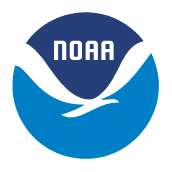Our History
A look back at where we've come from and where we are going.
A Brief Overview
GSL History Milestones
1979: Foundation of PROFS
- 1979: The Program for Regional Observing and Forecasting Services (PROFS) was established within the NOAA Office of Oceanic and Atmospheric Research, signaling the beginning of GSL's journey in Boulder, Colorado.
1980s: Expansion and Innovation
- 1981-1982: PROFS expanded its staff and capabilities, introducing a computer system for real-time weather data acquisition and conducting its first real-time forecast exercise.
- 1983-1984: Continued advancements with real-time forecast exercises and technology transfer initiatives, including the Profiler Technology Transfer Group's formation.
- 1985: Significant real-time summer forecasting exercise, with the Cheyenne flood highlighting PROFS' forecasting impact.
- 1986: DAR3E project initiation, showcasing early versions of advanced forecasting workstations.
1988: Formation of FSL
- October 1989: The transition from PROFS to the NOAA Forecast Systems Laboratory (FSL), marking a new chapter in GSL's history.
1990s: Growth and Development
- 1990-1991: FSL's restructuring and major projects like the pre-AWIPS system in Norman, Oklahoma, and the Profiler Demonstration Network.
- 1992: Introduction of the Rapid Update Cycle (RUC) model and continued support for the aviation and environmental science community.
- 1994: RUC goes into official operations at NMC, a testament to FSL's impactful research and development.
2000s: Towards Global Systems Division
- 2005: FSL's evolution into the Global Systems Division of the Earth System Research Laboratory, part of NOAA's strategic reorganization to enhance research and forecasting capabilities.
2020: A New Era
- April 2, 2020: NOAA's designation of the four divisions of the Earth System Research Laboratory in Boulder as full laboratories, with GSL maintaining its core mission while embracing new collaborative opportunities.
Our Mission
Lead research and directed development through the transition of environmental data, models, products, tools, and services to support commerce, protect life and property, and promote a scientifically literate public.
Research Areas
Organizational Excellence, Earth System Prediction, Advanced Technologies, and Decision Support are the foundation to achieving the GSL Grand Challenge: Deliver actionable global storm-scale prediction and environmental information through advanced technologies to serve society.
Global Systems Laboratory

